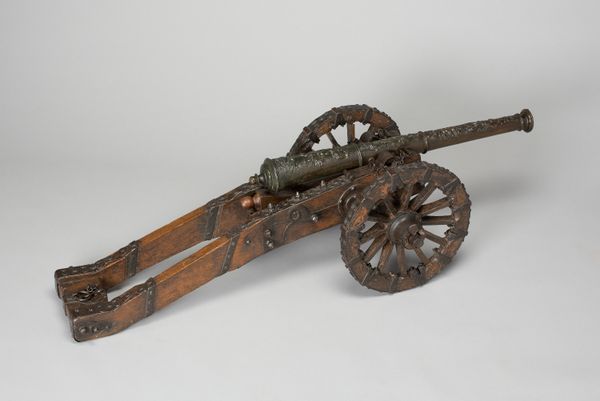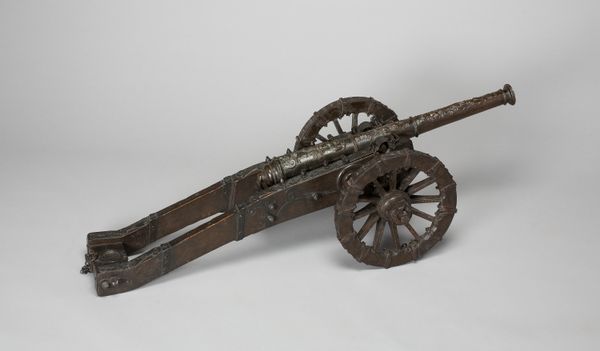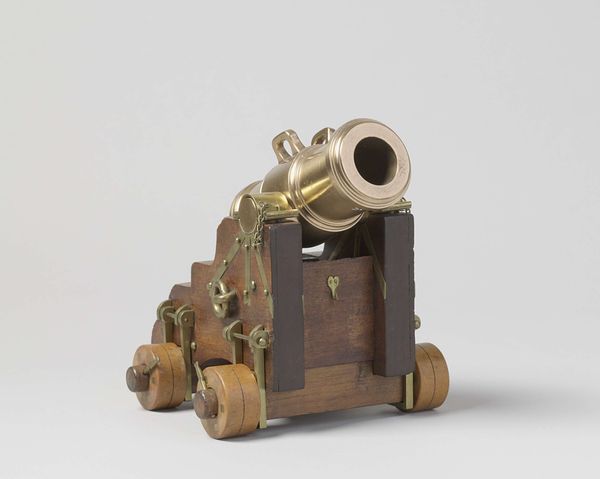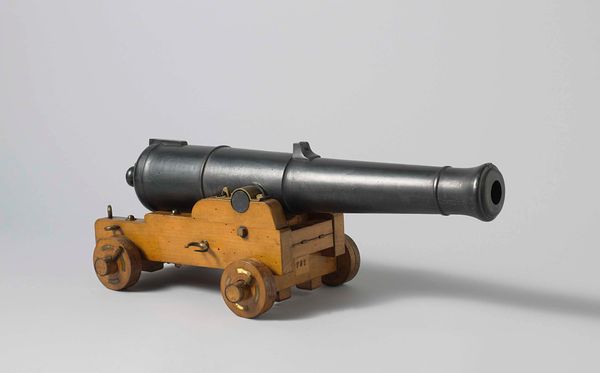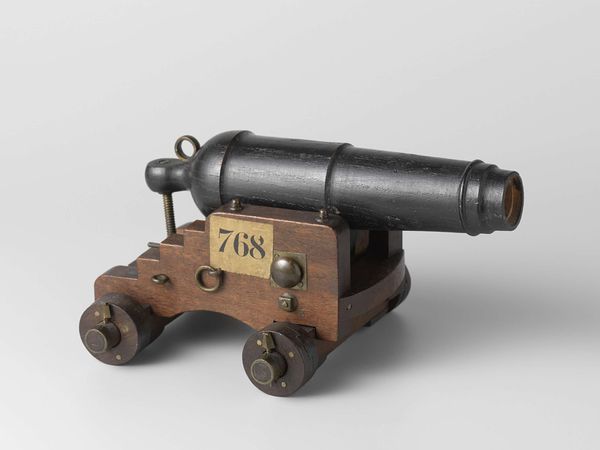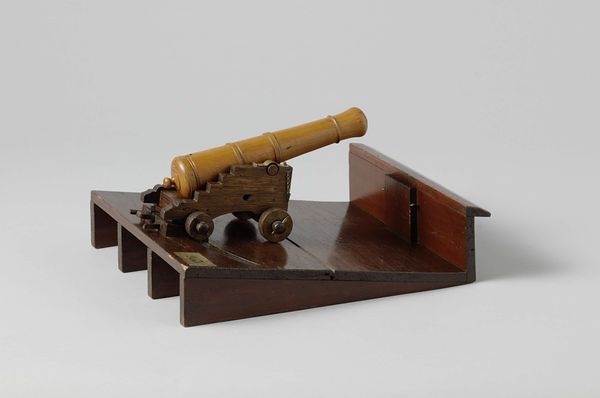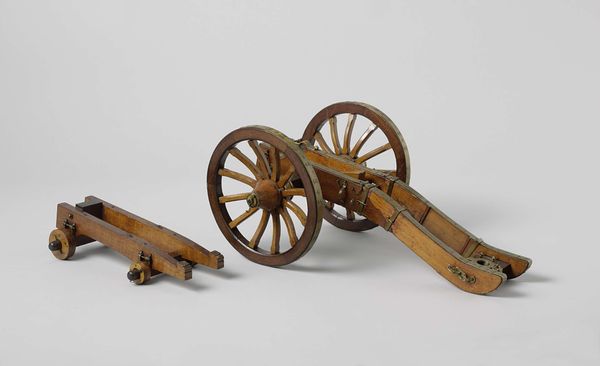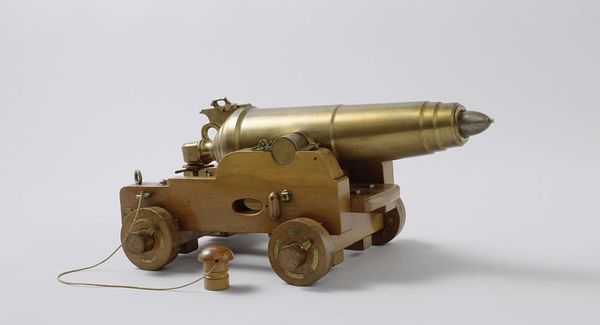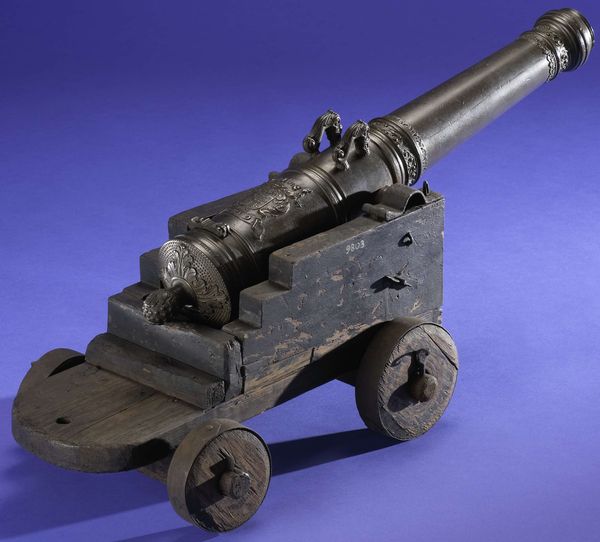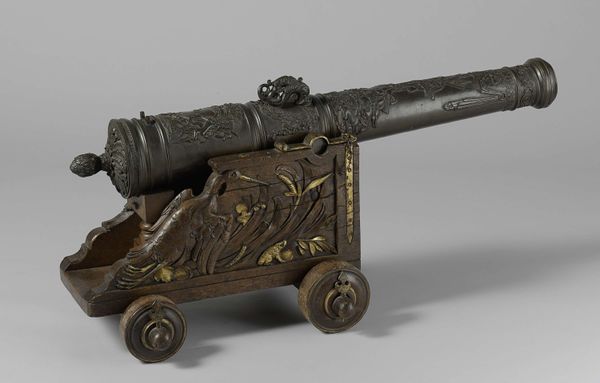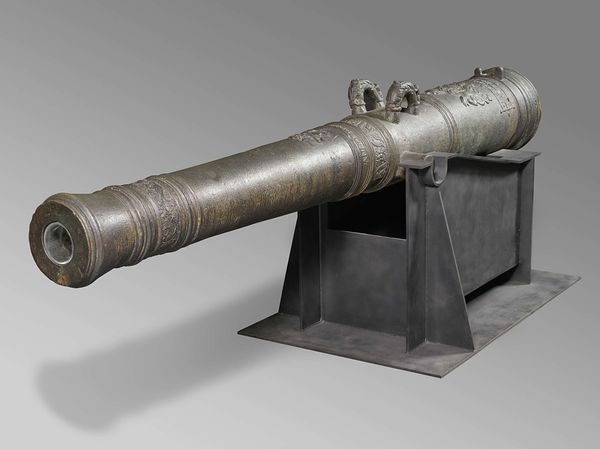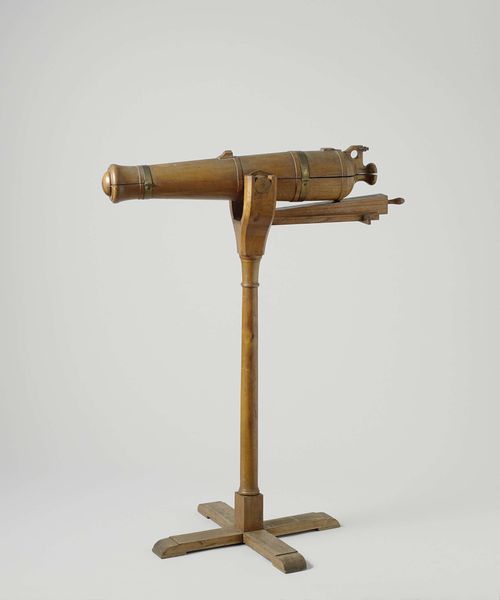
carving, bronze, wood
#
neoclacissism
#
carving
#
bronze
#
stoneware
#
wood
#
history-painting
Dimensions: length 27 cm, length 34 cm, width 19 cm, height 20 cm
Copyright: Rijks Museum: Open Domain
Editor: This is the "Model of a 30-Pounder Carronade" created around 1800. It appears to be crafted from wood and bronze. The first thing that struck me was its size; it seems quite small, like a miniature version of a weapon of war. What’s significant about depicting artillery in such a precise model? Curator: Scale models like this occupied an interesting space. The late 18th century witnessed the rise of the public museum. Before photography, how would people understand complex technological advancements or displays of military might? Consider how such models mediated public perception of the Navy. Editor: So it’s not just about documentation but also shaping public opinion? Like a form of propaganda, in a way? Curator: Indeed. Consider the context of the Napoleonic Wars raging in Europe during the time this was made. Maritime power and its projection were crucial. This carronade represents British military capabilities and technological advancements to those viewing it. Now, what about the craftsmanship – does it look 'warlike', aggressive, or what does it suggest to you? Editor: The detailed craftsmanship is remarkable. The use of wood and bronze, meticulously carved, gives it a sense of precision and sophistication. It looks like something more for admiration than immediate warfare, but surely this was not the primary audience. Curator: It served as a token and spectacle. Who were the likely audiences for such artifacts and displays? Editor: Probably the elite class and those with the ability to visit a public museum at the time, those with privileged social standing. Curator: Exactly. The museum’s collection of such items thus perpetuated power dynamics and access to seeing or understanding the image. These aren't passive documents, they're active participants in a historical narrative. Editor: I see, so it's not just about what the model is, but also about how it functioned within the social and political landscape of the time. Thank you. Curator: Precisely! Understanding how institutions and public perceptions intertwined is crucial to comprehending art of any period.
Comments
No comments
Be the first to comment and join the conversation on the ultimate creative platform.
